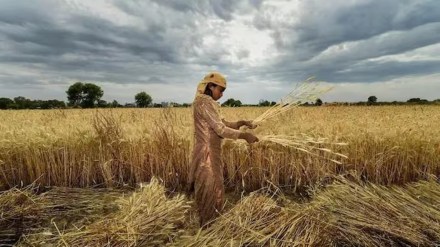National Bank for Agriculture and Rural Development (NABARD) is in discussion with Agriculture Insurance Company of India (AICIL) to extend the coverage of weather-linked insurance products to all farmers. Currently, insurance products are available only for crop farmers.
“We consider developing insurance products linked to actual crop loss. While such insurance already exists, expanding it to cover farmers comprehensively could be highly beneficial,” a senior official told FE.
“The current system, which relies on assessing actual losses, often faces delays — it can take one to two years before compensation reaches farmers. Therefore, there is a need to rethink and improve the implementation of insurance to ensure timely and effective support,” the official said.
Already, NABARD is exploring an insurance product which will link milk production with a temperature humidity index. The product will compensate for income losses due to reduction in milk yield owed to heat and humidity variations. Similarly, they look to provide insurance for fisheries activities including shrimp farming. Shrimp farming is one of the most affected sectors from higher US tariffs. If there is any stress or crisis in the sector, these insurance coverage helps them, the official quoted above said. Currently, insurance penetration into these underserved segments has been very low, he added.
Besides, NABARD plans to develop a farmers credit score. It aims to develop a unified tool for integrating credit underwriting and insurance services on a common platform using Khet Score, an AI-based tool designed to assess the creditworthiness of farms. It also looks to create insurance products for Farmer Producer Organisations (FPOs).
National Bank for Agriculture and Rural Development (NABARD) is in discussion with Agriculture Insurance Company of India (AICIL) to extend the coverage of weather-linked insurance products to all farmers. Currently, insurance products are available only for crop farmers.
“We consider developing insurance products linked to actual crop loss. While such insurance already exists, expanding it to cover farmers comprehensively could be highly beneficial,” a senior official told FE.
“The current system, which relies on assessing actual losses, often faces delays — it can take one to two years before compensation reaches farmers. Therefore, there is a need to rethink and improve the implementation of insurance to ensure timely and effective support,” the official said.
Already, NABARD is exploring an insurance product which will link milk production with a temperature humidity index. The product will compensate for income losses due to reduction in milk yield owed to heat and humidity variations. Similarly, they look to provide insurance for fisheries activities including shrimp farming. Shrimp farming is one of the most affected sectors from higher US tariffs. If there is any stress or crisis in the sector, these insurance coverage helps them, the official quoted above said. Currently, insurance penetration into these underserved segments has been very low, he added.
Besides, NABARD plans to develop a farmers credit score. It aims to develop a unified tool for integrating credit underwriting and insurance services on a common platform using Khet Score, an AI-based tool designed to assess the creditworthiness of farms. It also looks to create insurance products for Farmer Producer Organisations (FPOs).
According to the government data, the applications received under weather based crop insurance schemes for the kharif season stood at 11.15 lakh in 2025 so far with an area of 599.54 thousand hectares insured. The applications were 16.99 lakh in 2024, down from 21.85 lakh in 2023. The area insured was at 927.73 thousand hectares in 2024 compared to 1,113.78 thousand hectares in 2023.
